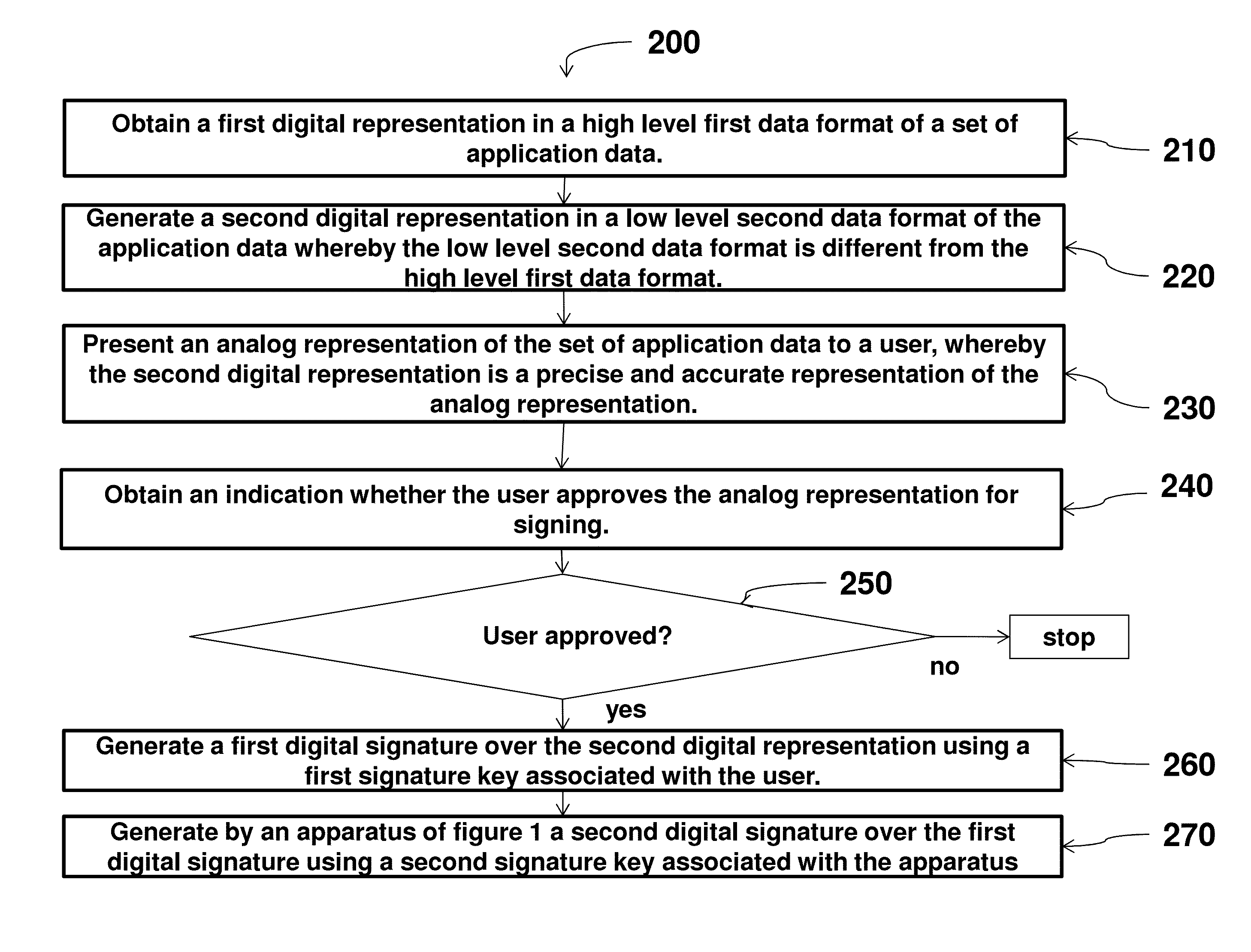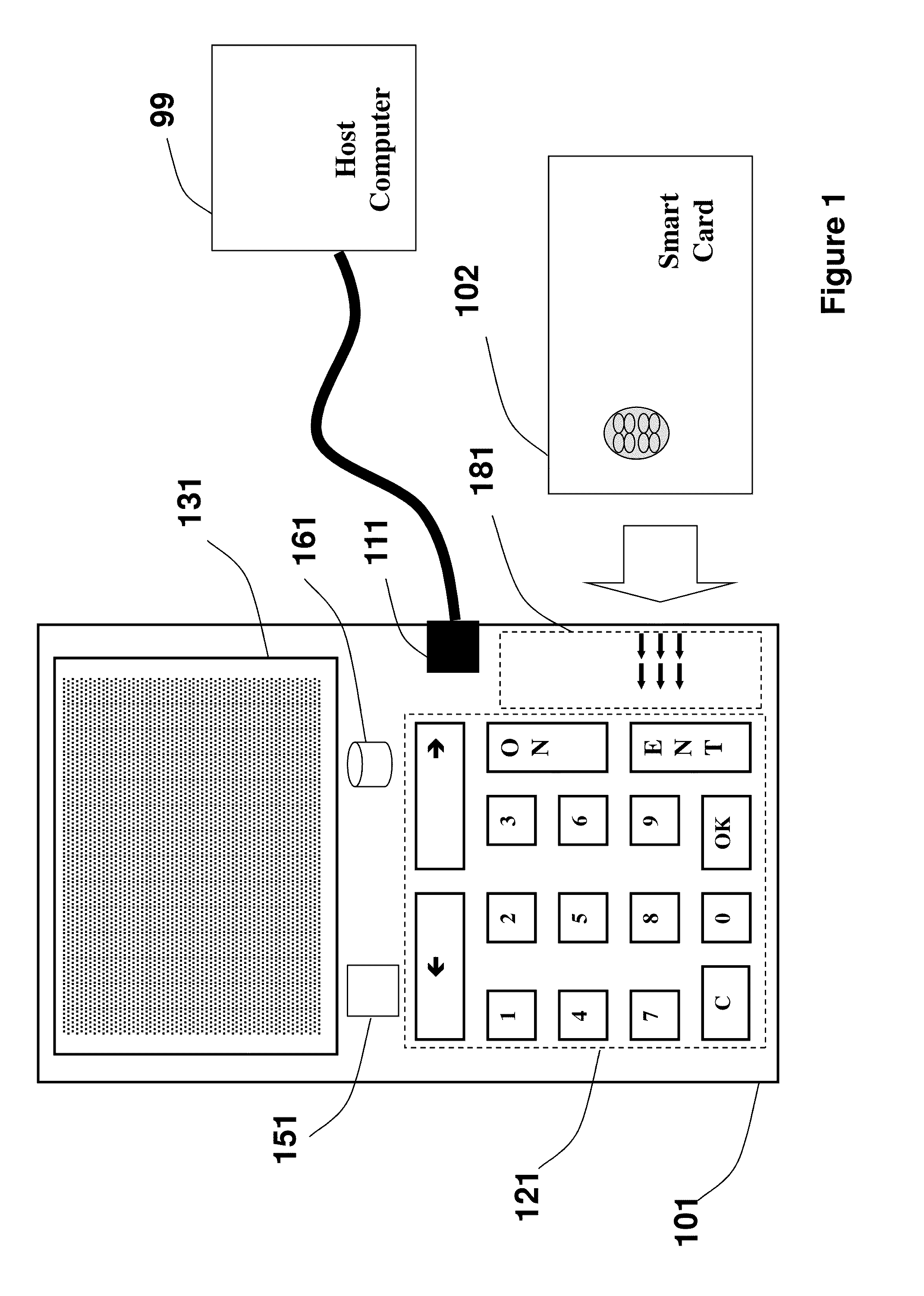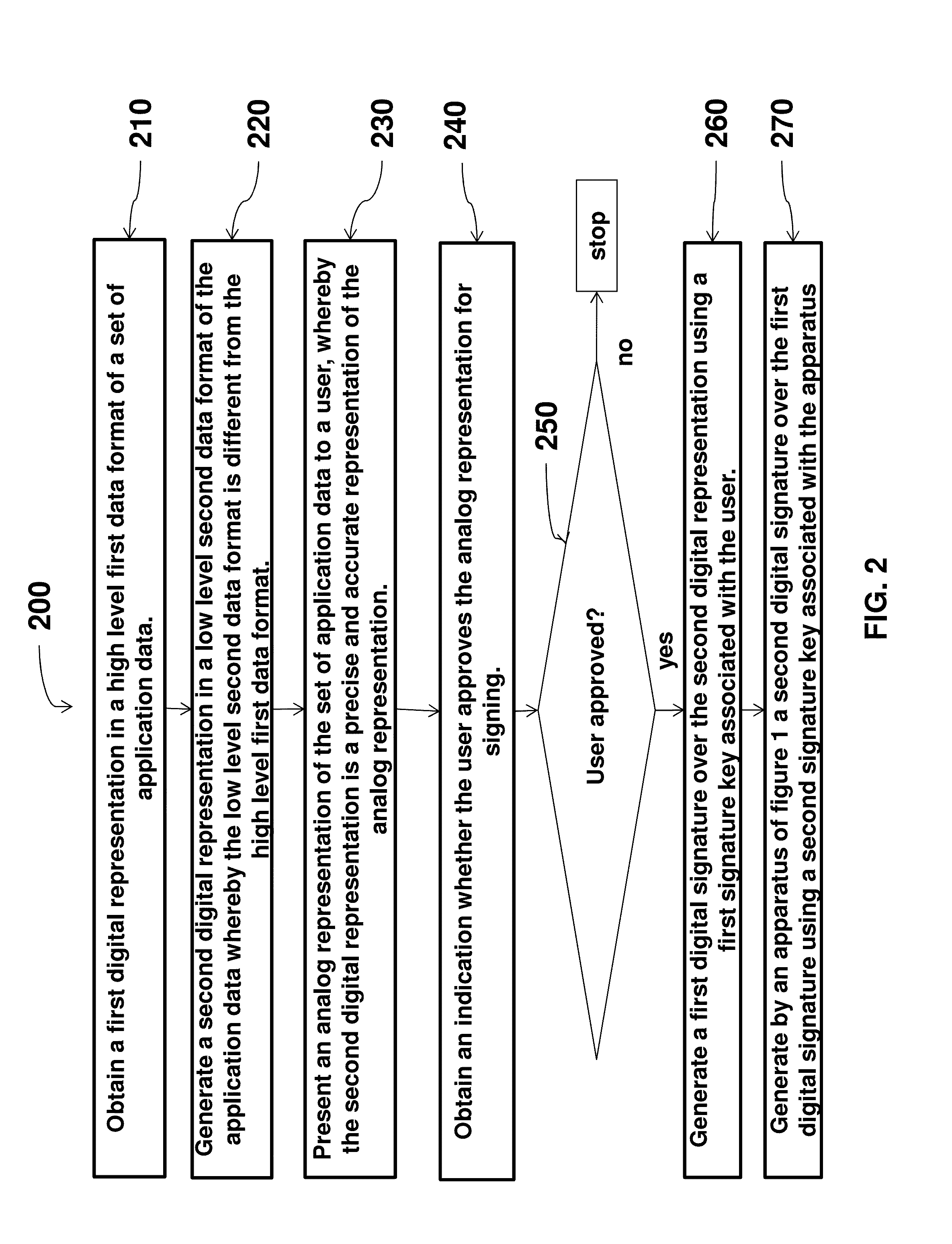Method And An Apparatus For Securely Signing Application Data
a technology of application data and secure signature, applied in the direction of digital data authentication, digital transmission, instruments, etc., can solve the problems of insufficient static passwords, insufficient security technology, and vulnerable computing devices
- Summary
- Abstract
- Description
- Claims
- Application Information
AI Technical Summary
Benefits of technology
Problems solved by technology
Method used
Image
Examples
Embodiment Construction
[0080]Some implementations of the present invention are discussed below. While specific implementations are discussed, it should be understood that this is done for illustration purposes only. A person skilled in the relevant art will recognize that other components and configurations may be used without parting from the spirit and scope of the invention.
[0081]Some embodiments of a first set of embodiments according to one aspect of the invention, illustrated in FIG. 1, comprise an apparatus (101) for digitally signing data. The apparatus may comprise: a first data communication interface (111) adapted to connect the apparatus to a host computing device (99) and to exchange data with the host computing device; a first human output interface (131) adapted to present data to a user of the apparatus; and a first human input interface (121) adapted to receive inputs from said user; whereby the apparatus is adapted to: obtain a first digital representation of data to be signed, said firs...
PUM
 Login to View More
Login to View More Abstract
Description
Claims
Application Information
 Login to View More
Login to View More - R&D
- Intellectual Property
- Life Sciences
- Materials
- Tech Scout
- Unparalleled Data Quality
- Higher Quality Content
- 60% Fewer Hallucinations
Browse by: Latest US Patents, China's latest patents, Technical Efficacy Thesaurus, Application Domain, Technology Topic, Popular Technical Reports.
© 2025 PatSnap. All rights reserved.Legal|Privacy policy|Modern Slavery Act Transparency Statement|Sitemap|About US| Contact US: help@patsnap.com



